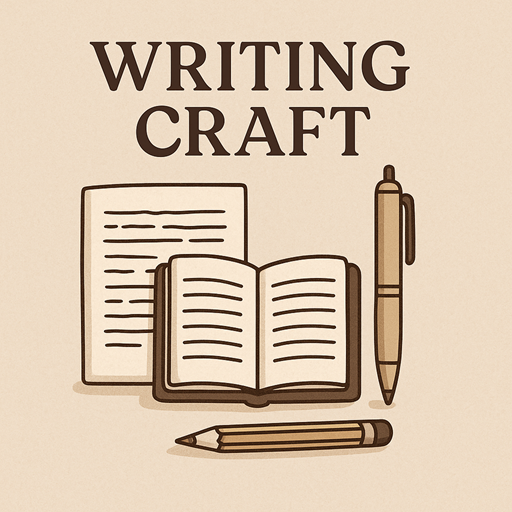Spoiler: It’s “Don’t Bore the Reader.”
Let’s cut through the noise. There’s only one rule that matters in writing fiction: don’t bore the reader.
That’s it. Everything else—craft, structure, style, voice, beautiful prose—can be learned, refined, revised. But if you lose your reader’s interest, none of those things will save the story. The moment someone puts your book down and doesn’t pick it up again? That’s game over.
Luckily, there’s a craft tool designed to help you hold on to your reader like a vice grip: tension.
Jordan Rosenfeld, in How to Write a Page Turner, distills the concept of tension into four essential tools. These aren’t just for thrillers or action scenes—they’re for every genre, every page. Tension is what keeps your reader emotionally invested and turning pages, even in quiet scenes. Let’s break them down:
1. Danger
Danger doesn’t have to be a gun to the head. It’s any sense of looming threat—emotional, physical, psychological, or relational.
Think:
- A woman walking alone at night, and footsteps echo behind her.
- A man deleting messages before his wife sees his phone.
- A teenager hiding a report card with failing grades.
Danger works because it introduces a sense of risk. Stakes rise, and readers instinctively lean forward. They want to know what’s going to happen, and more importantly, if the character will be okay.
Pro tip: Layer danger subtly. A character’s inner fears can be just as gripping as external threats.
2. Conflict
Conflict is the lifeblood of fiction. It’s people wanting things they can’t have—or butting heads over how to get them. Without conflict, scenes tend to meander. With it, even a simple breakfast conversation can crackle.
There are many flavors:
- Internal (a character torn between two choices)
- Interpersonal (arguments, power struggles, rivalries)
- Societal (rebellion against institutions or norms)
- Environmental (a storm, a crumbling cave, etc.)
Conflict doesn’t always mean characters fighting. It can be subtle, passive-aggressive, or even entirely internal. But there must always be friction.
3. Withholding
This is the art of not telling your reader something—yet. It’s what creates anticipation and compels them to keep reading.
Writers often worry they’re being too vague, but readers love a little mystery. What matters is controlled withholding—giving just enough to provoke curiosity without frustrating.
Examples:
- A character gets a strange letter… but we don’t see what’s inside.
- A couple argues in code about “what happened that night.”
- A detective finds a piece of evidence but pockets it before we see it.
Think of withholding like a trail of breadcrumbs—you’re leading the reader forward, one hint at a time.
4. Ambiguity
Ambiguity makes readers uneasy, and that’s a good thing. It allows space for interpretation, raises questions, and forces the reader to engage with the material on a deeper level.
Use ambiguity when:
- Motives are unclear.
- Morality is gray.
- Truth is subjective.
- Emotions contradict action.
It’s especially powerful in character development. A protagonist who makes an ethically questionable decision can generate more interest than one who’s always morally upright.
Note: Ambiguity is not the same as confusion. Confusion is a failure of clarity. Ambiguity is intentional.
Final Thoughts: Tension is Your Lifeline
You don’t have to be perfect. You don’t have to master everything right now. But if you can maintain tension, readers will follow you anywhere. You can fumble a plot point or write clunky dialogue—but if tension is pulsing under the surface, they’ll keep going.
So as you revise that scene or stare down your blank page, ask yourself the most important question in fiction:
Is this interesting?
And if it’s not—what can you add to create tension?
Because if you can hold a reader’s attention, you can earn the time and space to become great.


